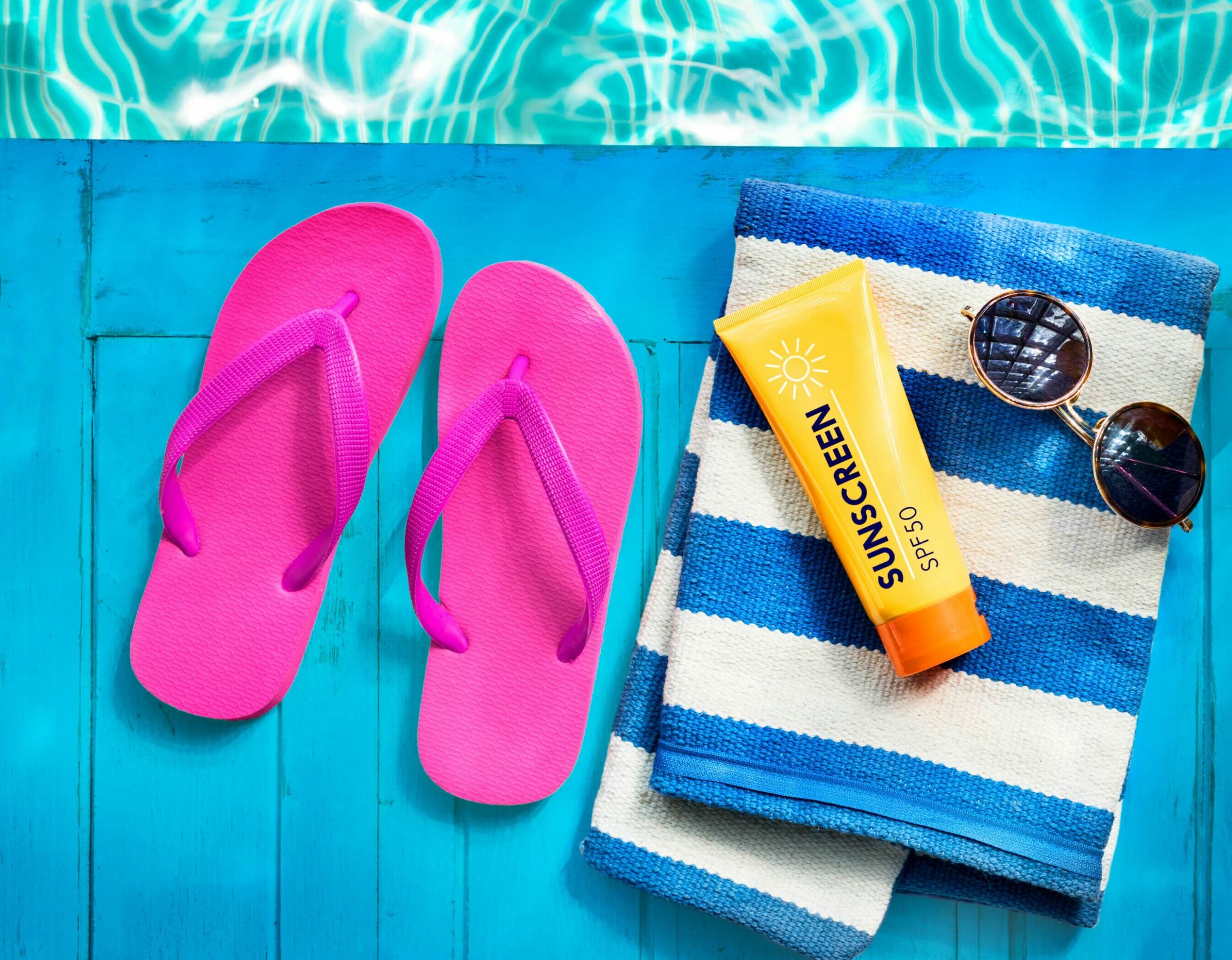Sun Safety

Liberty Reyes
Did you know?
– According to The Skin Cancer Foundation, if you’ve had five or more sunburns in your
lifetime, your risk of developing malignant melanoma, an aggressive and potentially
deadly type of skin cancer, more than doubles.
– Even one blistering sunburn in childhood can dramatically increase your risk of skin
cancer in adulthood
Current research shows that overall risk of skin cancer adds up over time and is directly linked
to the amount and intensity of Ultraviolet light exposure. While it’s true that some individuals
naturally have an increased risk due to family history and skin type, modifiable (or avoidable)
risk factors can be decreased by practicing Sun Safety every day.
Ultraviolet Light
Ultraviolet light, concerning sun exposure, comes in two types: Ultraviolet-A (UVA) and
Ultraviolet-B (UVB) rays. Most sun protection products protect against UVB, however, “broad
spectrum” coverage also has protection against UVA rays. UVB has been implicated as the
more common cause of sun damage, however, UVA rays can also contribute.
SPF Vs. UPF
The acronym SPF stands for Sun Protection Factor. The SPF number represents how many
minutes your skin is protected from harmful UV rays while exposed to sunlight. Nowadays,
many products have SPF, including clothing and hats, umbrellas, tents, sunscreens, sunblocks,
and more.
UPF stands for Ultraviolet Protection Factor. This differs from SPF in that it denotes the fraction
of UV rays that can penetrate through SPF fabrics and reach your skin’s surface.
Example: With UPF 30, 1/30th of the UV rays can still penetrate skin. SPF 30 provides 30
minutes of continuous protection to the outer layers of skin exposed to the sun, as long as it is
not washed off.
Sunscreen Vs. Sunblock
Either of these products may be found in various topical creams, sprays, lotions, sticks, etc. The
difference is that sunscreen absorbs harmful UV rays while sunblock keeps these rays from
reaching the surface of your skin. According to The American Academy of Dermatology,
sunblock is generally considered to be better for sensitive or sun-burn prone skin because it
usually contains the powerful minerals zinc oxide and/or titanium dioxide. It is also the preferred
sun protection for children and babies, as well as individuals with underlying skin diseases.
If you ever read labels on either sunscreen or sunblock, you’ll notice the term “waterproof” is
missing. That’s because none of these products have been proven to be completely waterproof;
there are some products, however, that are water resistant. Read the label carefully to
determine the amount of time each product is resistant to being washed off (it’s usually either 40
or 80 minutes.)
This could mean you have a water resistant sunblock with an SPF of 70. If you’re continuously
in the water, you may only be getting 40 minutes of UV protection.
Additional Tips
– Make sure to use at least SPF 30 for adequate UV protection
– Being in or near water increases your risk of sunburn as the water acts as a reflective
surface and increases the intensity of the UV rays
– Don’t forget your lips and face! Your lips have very sensitive skin that can also be
burned. Many lip balms also have SPF included, however, wearing any lip product with
oil will increase your risk of a burn. Many cosmetic products also have SPF included, so
be sure to be on the lookout for these.
– Products labeled as “Non-comedogenic” are formulated to help keep pores clear and are
less likely to cause acne
– Don’t forget eye protection and to apply SPF to your hairline or hair part, ears, and
hands (especially after handwashing); these parts of the body can be especially
susceptible to sun damage.
– Make sure you discuss your current medications with your medical provider prior to
going on a sun-heavy trip or vacation; some medications may increase your
photosensitivity (how sensitive your skin is to sunlight) and therefore increase your risk
of skin damage.
– Combining your sun protection methods is the most effective way to ensure safety: using
SPF (with continuous re-application) as well as covering exposed skin and seeking
shade should all be used together to ensure you stay healthy and sunburn free.
Stay safe and have a happy summer!
Kelley Flowers-Frazier, PA-C
